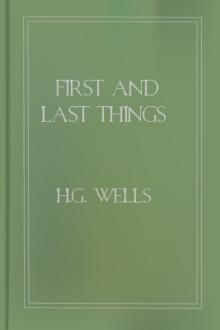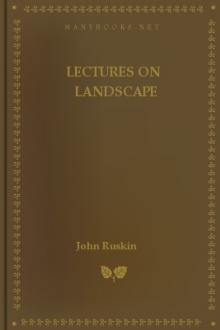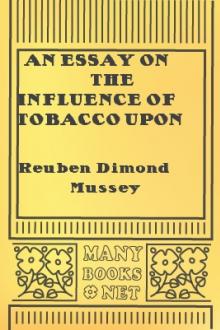Lippincott'S Magazine Of Popular Literature And Science, Volume 26 December, 1880. by Various None (smart ebook reader .txt) 📕

- Author: Various None
Book online «Lippincott'S Magazine Of Popular Literature And Science, Volume 26 December, 1880. by Various None (smart ebook reader .txt) 📕». Author Various None
Connection With The Living Has Endeared Them To Our Memories More Than
Their Relations To The Dead. Not Because It Is Boston'S Westminster
Abbey Or Temple Church Has The Old South Been Permitted To Come Down To
Us As The Best Example Of The Congregational Meeting-Houses Of The
Eighteenth Century, But Because Of The Revolutionary Episodes Of Which
It Was The Scene, And Which Are Commemorated In The Stone Tablet Upon
Its Front. The Old South Church, Built In 1729, Belonged To The Common
Class Of Brick Structures Which Replaced Wooden Ones; For, Like
Solomon'S Temple, Its Predecessor Had Been Built Of Cedar Sixty Years
Before. The Convenient Location Of The Old South And The Capaciousness
Of Its Interior Brought To It The Colonial Meetings Which Preceded The
Revolution, And Especially That Famous Gathering Of December 13, 1773,
Whence Marched The Disguised Patriots To Destroy The Taxed Tea In boston
Harbor. The Convenient Access And Spacious Audience-Room Of The Old
Church Also Led To Its Occupancy As A Riding-School For British Cavalry
In 1775. Even Now, In The Quiet Days Following The Recent Excitement
Attending Its Escape From Fire And From Sale And Demolition, The Ancient
Church Still Finds Occasional Use As A Place For Lectures And Public
Gatherings. Its Chequered Days Within The Past Decade Have At Least
Served To Make Its Appearance And Its Part In colonial History More
Familiar To Us, And Have Done Something To Save Other Churches From The
Destruction Which Might Have Overtaken Them.
As The Old South Stands As The Brick-And-Mortar Enshrinement Of The Best
Puritan Thought Of The Eighteenth Century, So King'S Chapel In boston,
Built Twenty-Five Years Later, Represents The Statelier Social Customs
And The More Conservative Political Opinions Of The Early New England
Episcopalians. Its Predecessor, Of Wood, Was The First Building Of The
Church Of England In New England. The Present King'S Chapel, With Its
Sombre Granite Walls And Its Gently-Lighted Interior, Suggests To The
Mind An Impression Of Independence Of Time Rather Than Of Age. One Reads
On The Walls, To Be Sure, Such High-Sounding Old Names As Vassall And
Shirley And Abthorp, And On A Tomb In The Old Graveyard Near By One Sees
The Inscriptions Commemorating Governor John Winthrop Of Massachusetts
And His Son John, Governor Of Connecticut. But King'S Chapel Seems The
Home Of Churchly Peace And Gracious Content; So That, As We Sit Within
Its Quaint Three-Sided Pews, It Is Hard To Remember The Stormy Scenes In
Which It Has Had Part. Its Tory Congregation, Almost To A Man, Fled From
Its Walls When The British General, Gage, Evacuated Boston; The Sterner
Worshippers Of The Old South Occupied Its Anglican Pews For A Time; And
Later It Was The Scene Of A Theological Movement Which Caused, In 1785,
The First Episcopal Church In New England--Or Rather Its Remnant--To
Volume 26 Title 1 (Lippincott'S Magazine Of Popular Literature And Science) Pg 35Become The First Unitarian Society In america.
In Salem Street, Boston, Left Almost Alone At The Extreme North End Of
The City, Is Christ Church, Built In 1723. Its Tower Contains The Oldest
Chime Of Bells In america, And From It, According To Some Antiquarians,
Was Hung The Lantern Which On April 18, 1775, Announced To The Waiting
Paul Revere, And Through Him To The Middlesex Patriots In all The
Surrounding Country, That General Gage Had Despatched Eight Hundred Men
To Seize And Destroy The Military Stores Gathered At Concord By The
Massachusetts Committees Of Safety And Supplies. Thus Opened The
Revolutionary War, For The Battles At Lexington And Concord Took Place
Only The Next Day.
The White-Spired Building At The Corner Of Park And Tremont Streets,
Boston, Known As The Park Street Church, Is Hardly So Old As Its
Extended Fame Would Lead One To Suppose, For It Dates No Farther Back
Than The First Quarter Of The Present Century. Its Position As The
Central Point Of The Great Theological Controversies Of 1820 In The
Congregational Churches Of Eastern Massachusetts Has Made It Almost As
Familiar As The "Saybrook Platform." The Meeting-House Was Built At The
Time When The Greater Part Of The Boston Churches Were Modifying Their
Creeds, And When The Old South Itself Would Have Changed Its
Denominational Relations But For The Vote Of A State Official, Cast To
Break A Tie. Its Inelegance And Rawness Are Excused In Part By Its
Evident Solidity And Sincerity Of Appearance. In Its Shadow Rest
Faneuil, Revere, Samuel Adams And John Hancock.
Boston Has Other Churches Which, Like The Park Street, Are Neither
Ancient Nor Modern, The Hollis Street Church And The First Church In
Roxbury Being Good Examples. New England Has Hardly A Better Specimen Of
The Old-Fashioned Meeting-House On A Hill Than This Old Weather-Beaten
Wooden First Church In Roxbury, The Home Of A Parish To Which John
Eliot, The Apostle To The Indians, Once Ministered. Another Quaint
Memorial Of The Old Colonial Days Survives In The Current Name,
"Meeting-House Hill," Of A Part Of The Annexed Dorchester District Of
Boston.
[Ilustration: St. Paul'S Chapel, New York.]
St. Paul'S Church, On Boston Common, Was The First Attempt Of The
Episcopalians Of The City, After The Loss Of King'S Chapel,
To Build A Temple Of Imposing Appearance. Controversies Theological And
Architectural Rose With Its Walls, And Young Edward Everett, If Report
Is To Be Credited, Was The Author Of A Tract, Still In circulation, In
Which Its Design And Its Principles Formed The Text For A Criticism On
The Religion To Whose Furtherance It Was Devoted. Standing As It Does
Next The United States Court-House, The Uses Of The Two Buildings Seem
To Have Been Confused In The Builders' Minds; For There Is Something
Ecclesiastical In The Appearance Of The Hall Of Justice, Which Was
Originally A Masonic Temple, And Something Judicial In The Face Of The
Church.
In Cambridge, Three Miles From Boston, The Eighteenth-Century
Episcopalians Not Only Possessed A Church, But Also Displayed To
Unwilling Eyes A Veritable "Bishop'S Palace"--The Stately House Of The
Rev. East Apthorp, "Missionary To New England" And Reputed Candidate For
The Bishopric Of That Region. Mr. Apthorp Was Rich And Influential, But
Volume 26 Title 1 (Lippincott'S Magazine Of Popular Literature And Science) Pg 36His Social And Ecclesiastical Lot Was Not An Easy One, And He Soon
Returned To England Discouraged, Leaving His "Palace" To Come Down To
The View Of Our Own Eyes, Which Find In It Nothing More Dangerous To
Republican Institutions Than Is To Be Discovered In a Hundred Other Of
The Three-Story Wooden Houses Which Used So To Abound In Massachusetts.
Christ Church, Cambridge, In Which The Bishop _In Posse_ Used To
Minister, And Which Stands Opposite Harvard College, Was Designed By The
Architect Of King'S Chapel, And Has Always Been Praised For A Certain
Shapely Beauty Of Proportion. For The Last Twenty Years It Has Boasted
The Only Chime Of Bells In cambridge, Whose Quiet Shades Of A Sunday
Evening Have Been Sweetly Stirred By The Music Struck From Them By The
Hands Of A Worthy Successor Of The Mediaeval Bell-Ringers, To Whom Bells
Are Books, And Who Can Tell The Story Of Every Ounce Of Bell-Metal
Within Twenty Miles Of His Tower. It Was Of This Church, With Its
Unitarian Neighbor Just Across The Ancient Churchyard Where So Many Old
Harvard And Colonial Worthies Sleep, That Holmes Wrote:
Like Sentinel And Nun, They Keep
Their Vigil On The Green:
One Seems To Guard, And One To Weep,
The Dead That Lie Between.
The Suburbs Of Boston Are Not Poor In churches Of The Eighteenth, Or
Even Of The Seventeenth, Century. The Oldest Church In New England--The
Oldest, Indeed, In The Northern States--Still Standing In Salem, Was
Built In 1634, And Its Low Walls And Tiny-Paned Windows Have Shaken
Under The Eloquence Of Roger Williams. It Has Not Been Used For
Religious Purposes Since 1672. In Newburyport Is One Of The American
Churches, Once Many But Now Few, In Which George Whitefield Preached,
And Beneath It The Great Preacher Lies Buried. A Curious Little Reminder
Of St. Paul'S, London, Is Found Here In The Shape Of A Whispering
Gallery. Another Landmark Is The Venerable Meeting-House Of The
Unitarian Society In Hingham, Popularly Known As The "Old Ship." Built
In 1681, It Was A Congregational Place Of Worship For Nearly A Century
And A Half. Its Sturdiness And Rude Beauty Form A Striking Illustration
Of The Lasting Quality Of Good, Sound Wooden Beams As Material For The
Sanctuary. Preparations Have Already Been Undertaken For Celebrating The
Second Centennial Of The Ancient Building. Nearly As Old, And Still More
Picturesque With Its Quaint Roof, Its Venerable Hanging Chandelier Of
Brass, Its Sober Old Reredos And Its Age-Hallowed Communion-Service, Is
St. Michael'S, Marblehead, Built In 1714, Where Faithful Rectors Have
Endeavored To Reach Six Generations Of The Fishermen And Aristocracy Of
The Rocky Old Port. The Antiquarian Who Has Seen These Old Temples And
Asks For Others On The New England Coast Will Turn With Scarcely Less
Interest To St. John'S, Portsmouth; The Forsaken Trinity Church,
Wickford, Rhode Island, Built In 1706; Or Trinity, Newport, Where Bishop
Berkeley Used To Preach. In Newport, Indeed, One May Also Speculate
Beneath The Old Mill On The Fanciful Theory That The Curious Little
Structure Was A Baptistery Long Before The Days Of Columbus--The Most
Ancient Christian Temple On This Side The Sea.
It Is Not Uncommon To Find Comparatively New American Churches To Which
Their Surroundings Or Their Sober Material Or Their Quiet Architecture
Have Given A Somewhat Exaggerated Appearance Of Age. Such Is The Case
With The Curious Row Of Three Churches--The North And Centre
Congregational And Trinity Episcopalstanding Side By Side On The New
Volume 26 Title 1 (Lippincott'S Magazine Of Popular Literature And Science) Pg 37Haven Green In a Fashion Unknown Elsewhere In Our Own Country. Any One
Of These Three Churches Looks Quite As Old As That Shapely Memorial Of
Pre-Revolutionary Days, St. Paul'S Chapel, New York, Built In 1766 In
The Prevailing Fashion Of The London Churches. As With St. Paul'S, There
Was Also No Marked Appearance Of Antiquity In The North Dutch Church,
New York, Removed In Recent Years. The Poor Old Middle Dutch Church In
The Same City, With Its Ignoble Modern Additions And Its Swarm Of Busy
Tenants, Would Have Looked Old If It Could Have Done So, But For Modern
New Yorkers It Has No More Venerable Memory, In Its Disfigurement And
Disguise, Than That Furnished By Its Use, For A Time, As The City
Post-Office.
[Illustration: Old Swedes' Church, Philadelphia.]
New York Is Poor In Old Buildings, And Especially Poor





Comments (0)